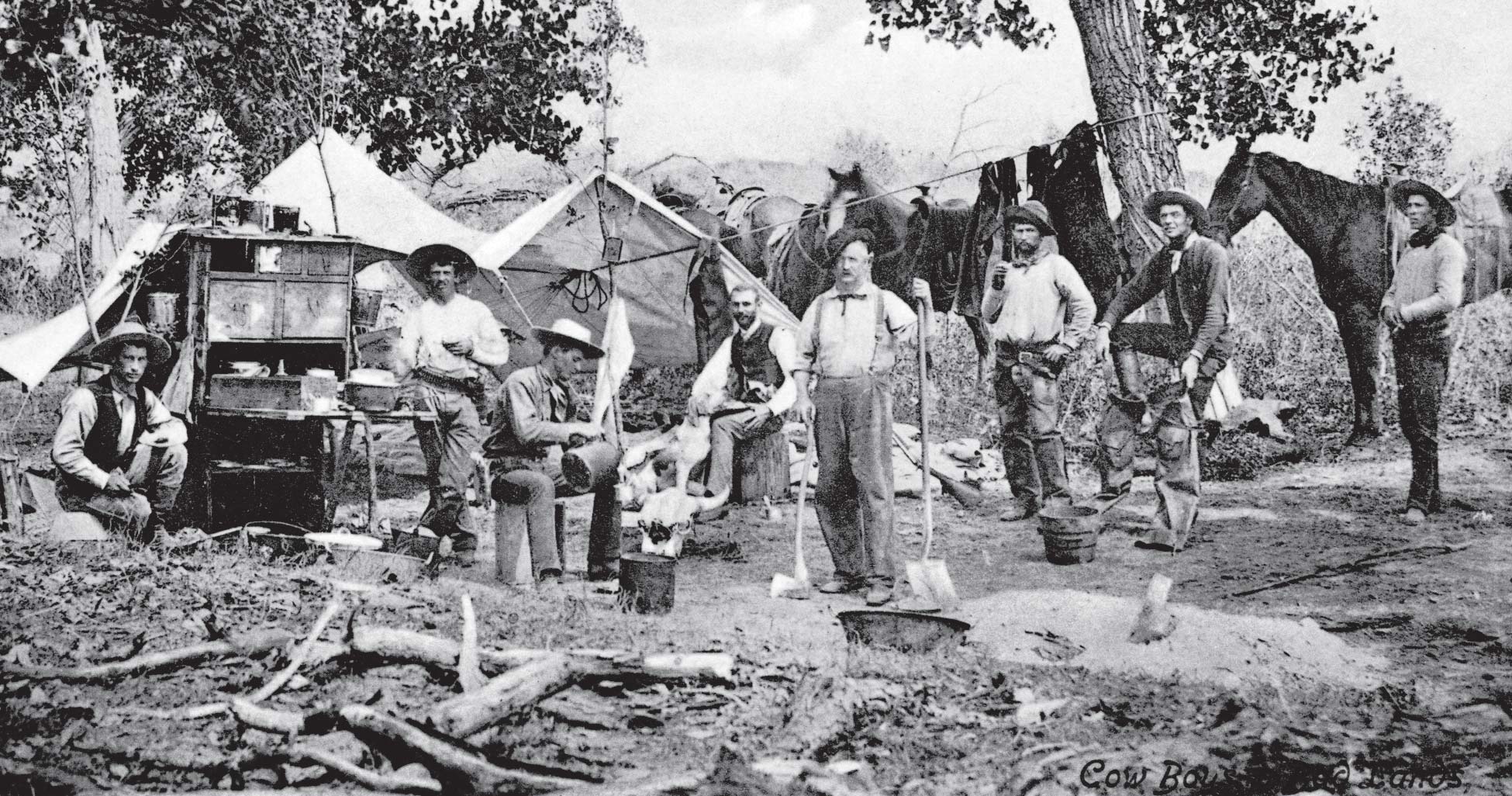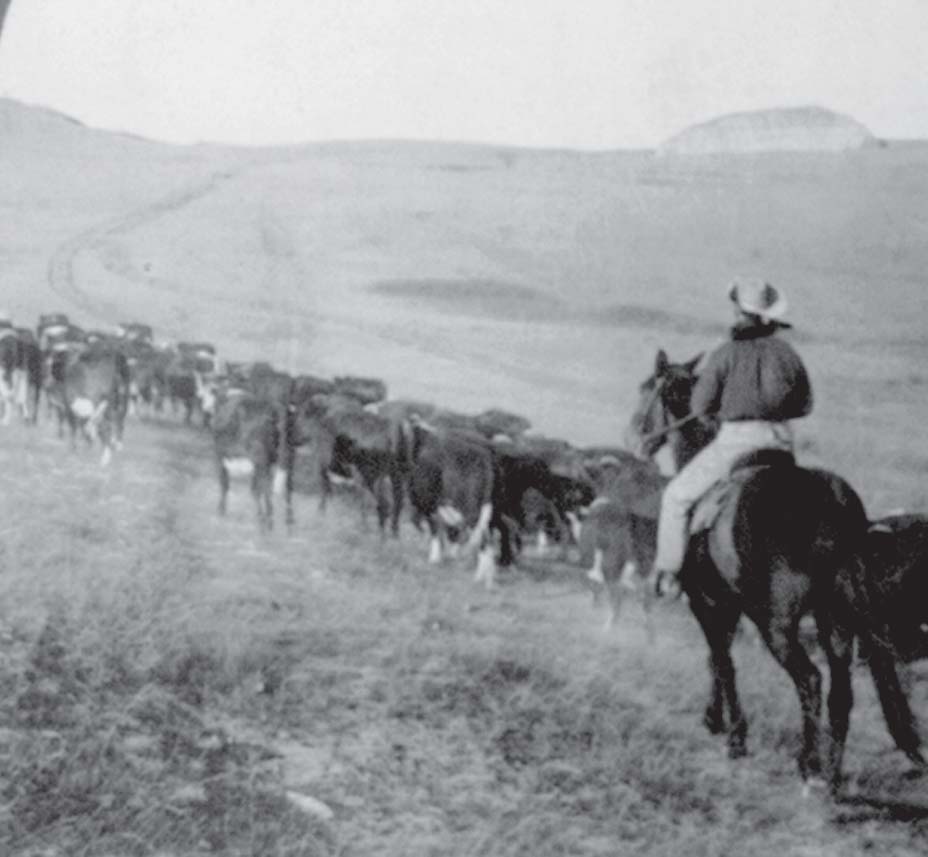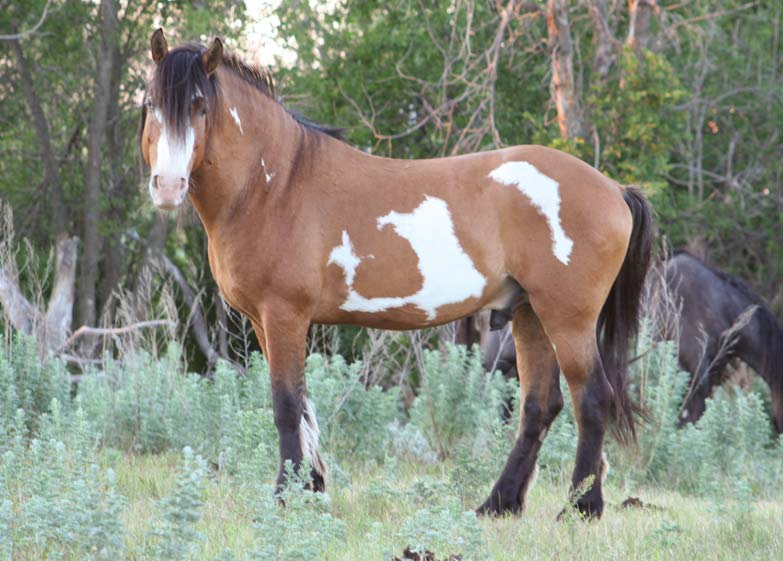A farmPiece of land on which crops or animals are raised is a piece of land on which crops or animals are raised. A ranchLarge area of land used to raise herds of cattle, sheep, or horses is a large area of land used to raise herds of cattle, sheep, or horses. Eastern North Dakota is well-suited for farming, whereas western North Dakota is ideal for ranching. At the same time that a wheat bonanza was taking place in eastern Dakota in the 1800s, a cattle bonanza was developing in western Dakota.
Beef cattleCattle raised for meat were first brought into northern Dakota in the 1860s to provide meat for soldiers in the military forts. After the Northern Pacific Railroad opened up lands in western North Dakota, more cattle were brought to the area.
The valley of the Little Missouri River was perfect for ranching. The region, particularly the Badlands, had good grass for grazing, streams for water, and canyons and gullies for shelter. Some of the promoters of the region thought the name “Badlands” might not sound appealing, so they called the area “Pyramid Park.”
Wealthy businessmen in the East heard about the good grazing lands in western Dakota Territory. They began furnishing money to start huge cattle ranches in the area. Cowboys drove cattle along trails from regions in the South to fatten up on healthful grass in the western part of northern Dakota.

Figure 40. Cowboys camping in the Badlands. (SHSND A0686)

Figure 41. Rounding up cattle on the open range of North Dakota, 1905. (Library of Congress, LC-USZ62-56804)
The largest number of cattle herds came from Texas. They were a rugged breed of cattle called “Texas Longhorns.” In 1876, one of the first herds of Texas Longhorns, consisting of about 2,500 head of cattle, was brought to Dakota. It took about three months to drive a herd of cattle from Texas to northern Dakota.
The ranchers in western Dakota kept their cattle on open range.Land that is not fenced, where cattle are free to graze This means the land was not fenced in, and cattle were free to graze anywhere. Naturally, cattle from the different ranches got mixed together. Every ranch had its own brand,Special identification mark burned onto the skin of animals or special mark, that was burned onto the skin of each animal in order to identify it.
Twice a year, a round-up was held. Cowboys from the surrounding ranches rounded up the cattle. A branding iron heated in a fire was used to brand the calves with the same brand as the cows they were following. The cattle that were ready for market were separated from the herd so they could be shipped to market. The market cattle usually were herded to the railroad yard and loaded into train boxcars.
Theodore Roosevelt came to the Badlands to hunt bison in 1883 and eventually bought two ranches. For several years, he spent summers or parts of summers in northern Dakota working on his ranches and hunting. Because he wore glasses, the cowboys nicknamed him “Old Four Eyes.” Theodore Roosevelt served as president of the United States from 1901 to 1909 and credited his experience in North Dakota as a factor in his becoming president.
The Marquis de Morès (mar-Kee da Mor-Ez), who founded the town of Medora, went into business in the Badlands in 1883. Later that summer, the Marquis put up barbed wire fences, which upset some neighbors. The Marquis was involved in a shoot-out with three men. One man was killed and two were wounded. The Marquis went to court three different times on the murder charge but was never convicted.
Over the next decade,10-year period" millions of cattle from Texas and other areas were fattened up in western Dakota and then taken to market. By 1886, the range had become overcrowded with thousands of cattle competing for the grass. The summer of 1886 was very dry, so the grass did not grow well. When fall came, the cattle were thin and not as strong as they should have been to face the winter.

Figure 46. Nokota horse. (Nokota Horse Conservancy, Castle McLaughlin)
The Marquis de Morès owned 250 horses that had previously belonged to the Lakota leader Sitting Bull. After the Marquis died in 1896, A.C. Huidekoper bought 60 of these special horses, but most of the horses were left to run wild in the Badlands. These wild horses may have become the stock of the Nokota horse,Honorary equine (horse) of North Dakota the honorary equine (horse) of North Dakota.
The winter of 1886 started early with a heavy snowfall. A few days later, the weather turned mild, melting the top layer of snow. Suddenly, the temperature dropped, and a thick crust of ice was formed on top of the snow. This made it very difficult for the cattle to get to the grass underneath.
The winter turned out to be severe with blizzards and extremely low temperatures. January and February had several days with temperatures falling lower than 40 degrees below zero. The combination of the cattle starting the winter being thin, the ice crust over the grass, the extremely cold temperatures, and not enough shelter from the blizzards resulted in disaster for the herds. By the time spring came, about 80 percent of the cattle had died. This means that out of every 100 cattle, only about 20 were left (100 – 80 = 20). Many of the big cattle companies went broke.
Several of the cattle ranchers turned to raising horses. There was a big demand for work horses, which were the main source of power on the farms. Horses were also used throughout the country for pulling wagons and buggies and providing other means of transportation and power.
One of the cattlemen, A.C. Huidekoper, had begun raising horses in 1884. He had already figured out that horses came through the winters better than cattle. In 1884, Huidekoper started a business called the Little Missouri Horse Company near the present-day town of Amidon.
The Little Missouri Horse Ranch, also called the “HT Ranch,” was the largest horse-raising business to ever operate in North Dakota. Huidekoper began with about 800 horses but expanded until he owned almost 12,000 horses that grazed on hundreds of acres of open range. The era of the open range came to an end when homesteaders began farming in the area. Huidekoper sold his ranch and moved out of the area.
A few ranchers in western North Dakota raised sheep, but sheep ranching never became as popular as cattle or horse ranching. The sheep herders needed to be watchful of predators such as wolves and coyotes.
Both the bonanza farms and the huge cattle ranches had served useful purposes in the settlement of northern Dakota. Both had shown that the land was productive and could provide a means of support. Eastern newspapers, as well as newspapers in Europe, printed stories about the good living that could be made in this exciting new land.





